Quantifiable Impact: How Today’s Enterprise Benefits from Low-Code
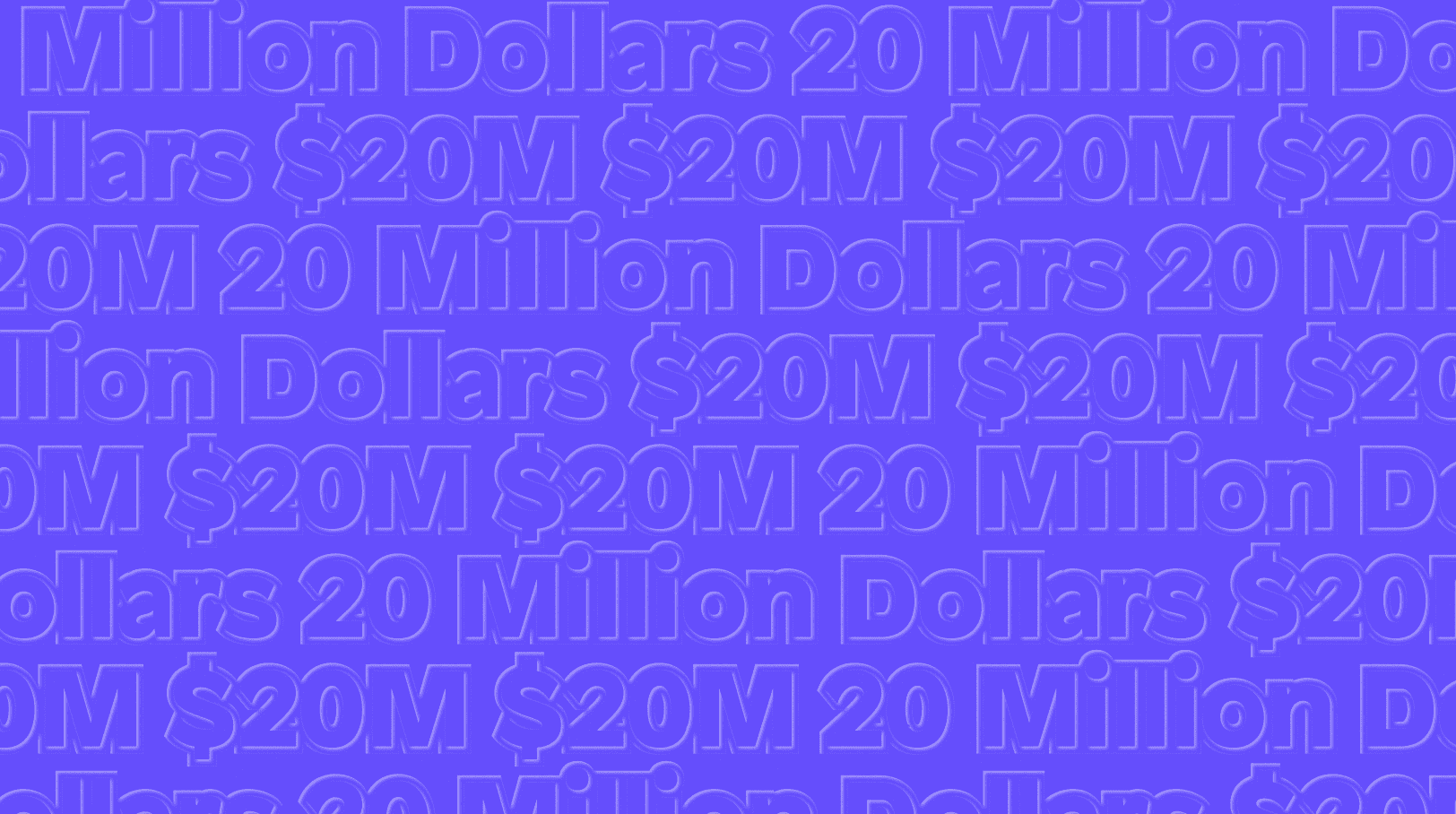
Keeping pace with business innovation, disruption, and the demand for IT solutions continues to grow year over year. It’s a seller’s market for hiring professional developers, and the resultant resource gap compounds the problem. From internal process optimizations to customer-facing bells and whistles, the work funnels back to the IT department and its ever-growing backlog of critical projects and legacy maintenance work.
The benefits of low-code development platforms such as Mendix are that they’re a solution to the technology bottleneck that keeps an organization from reaching its potential.
Mendix commissioned Forrester Consulting to conduct a Total Economic Impact™ (TEI) study of its low-code application development platform. According to Forrester, over a three-year period, Mendix’s low-code platform can generate an organization over $20M in net benefits, realized across savings in the application development process and by creating operational efficiencies, and revenue from enhanced customer engagement and accelerated time-to-market for new products and services.
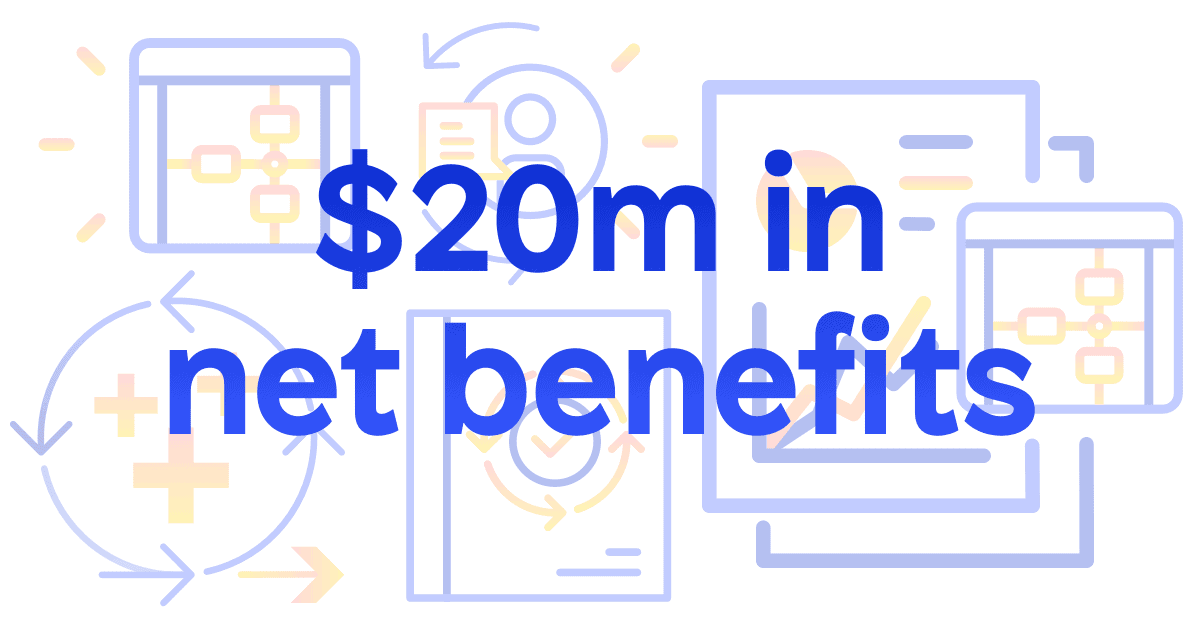
Let’s take a closer look at the report itself and the framework and methodology behind the math to understand better what these figures mean and why they are important.
What is Forrester’s Total Economic Impact Report?
TEI reports are research-based, third-party studies conducted by Forrester Consulting to evaluate the costs, benefits, flexibility, and risks of IT decisions. They provide a framework for readers to determine the future financial impact of adopting a particular technology on their organization.
To quantify the benefits of low-code development with Mendix, Forrester Consulting applied a four-step approach to generate a composite organization—a fictitious, multinational, B2B/B2C corporation headquartered in the US, informed by the characteristics of real Mendix customers. They gathered data from interviews with Mendix experts and conducted interviews with current Mendix customers to obtain real-world risk, cost, and benefit data. From there they created a risk-adjusted economic model and compiled a composite case study detailing the financial impact of adopting Mendix’s low-code platform.
Results of Mendix’s Low-code Platform TEI Report—and What They Mean
Forrester’s TEI study uncovered four quantitative benefit areas for Mendix’s low-code application development platform: application delivery savings, operational efficiencies, incremental revenue from improved customer engagement, and incremental revenue from accelerated product and service time to market. The report also uncovered qualitative results that have both direct and indirect impacts on the findings.
Some high-level findings of the Mendix low-code platform TEI report from Forrester include:
- Mendix’s model-driven development framework is built for abstraction and automation—making it simpler to learn for non-professional developers and decreasing the time commitment on software delivery, especially including house-keeping or repetitive tasks for the pros.
- Adding non-professional or citizen developers broadens an enterprise’s workforce capable of creating applications, accelerating time-to-market, and opening the door for more attention and responsiveness to a wider array of value-driving development projects.
- With Mendix, organizations can automate error-prone processes, improve customer service with quicker outcomes and innovative technology, and increase yield-per-employee and employee satisfaction rates—the better the tech works, the happier the employee doing the work.
It’s these capabilities that directly impact the value you receive in each benefit area.
A Closer Look at Mendix’s TEI Study
Forrester’s TEI report looks at benefit and cost data over a three-year period, taking into account total benefits, as well as the present-value discount and risk-adjusted values. Let’s apply some quantitative scaffolding from Forrester’s TEI study to these claims. We’re presenting the risk-adjusted values, which are a 20% reduction from the Total benefit.
Application Delivery Savings Attributed to Mendix
According to Forrester’s findings, the Mendix Platform will save the composite organization more than $8.08 million in application delivery costs over three years (risk adjusted by 20%). These savings come down to two factors—increased application development velocity and decreased resource and maintenance costs.
Breaking It Down
Compared to developing with the Mendix Platform, traditional programming takes more time and more people to develop and maintain applications, using 2.4 developers per application, according to interviews conducted for the TEI report. At an industry average, that’s $104,000 in annual salary, meaning that just five apps require $1.26M traditionally.
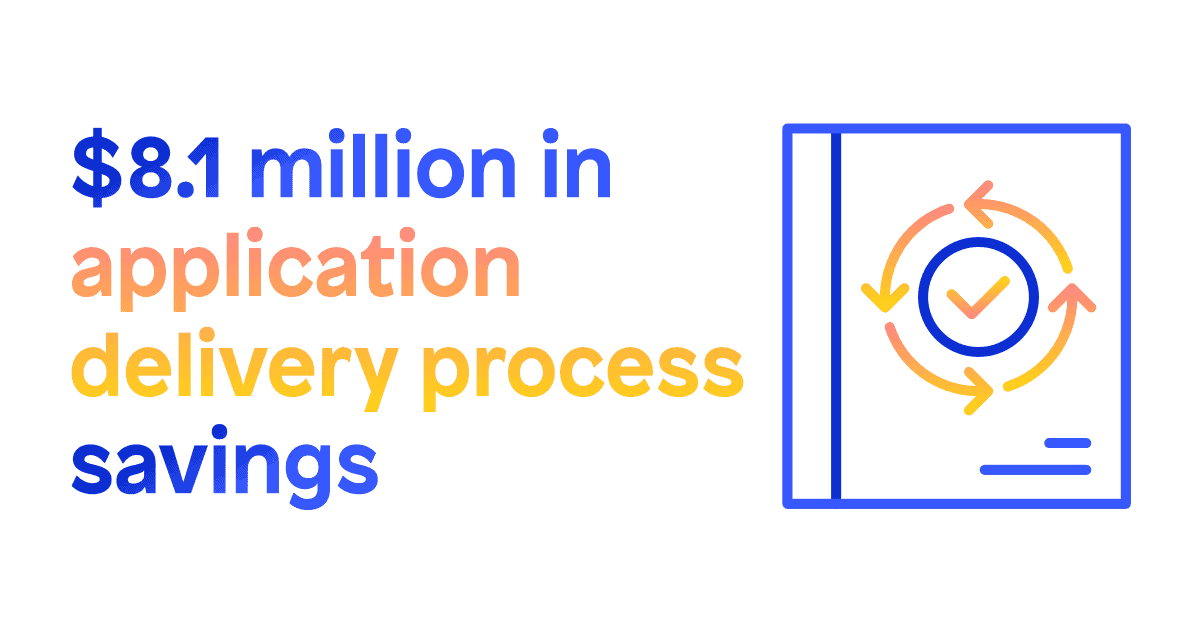
Because the Mendix Platform reduces development and maintenance time and effort, it takes less than one developer—0.96—to develop each application. Moreover, because the threshold for development is lower, fully-equipped professional developers aren’t necessarily required for every single task.
Compared to the $1.26 million in development costs cited above, a 50-50 mix of fully-loaded professional developers and Mendix-trained developers will produce the same output for $456,000. Even with a risk adjustment of 20 percent, that’s a savings of $600K in application delivery costs in the first-year ramp-up, alone.
Operational Efficiency Savings Attributed to Mendix
According to Forrester Consulting’s findings, the Mendix Platform will save the composite organization $5.97 million—risk adjusted—in operational efficiencies created over three years. This savings comes down to cross-system access to data, process automation, and error reduction.
Breaking It Down
Enhancements that reduce errors and increase data access minimize the number of workforce hours required to operate as an organization. According to the interviews conducted with Mendix customers, the total reduction in hours is the equivalent, on average, of three employees working the industry-standard full-time equivalent (FTE) of 2,080 hours each.
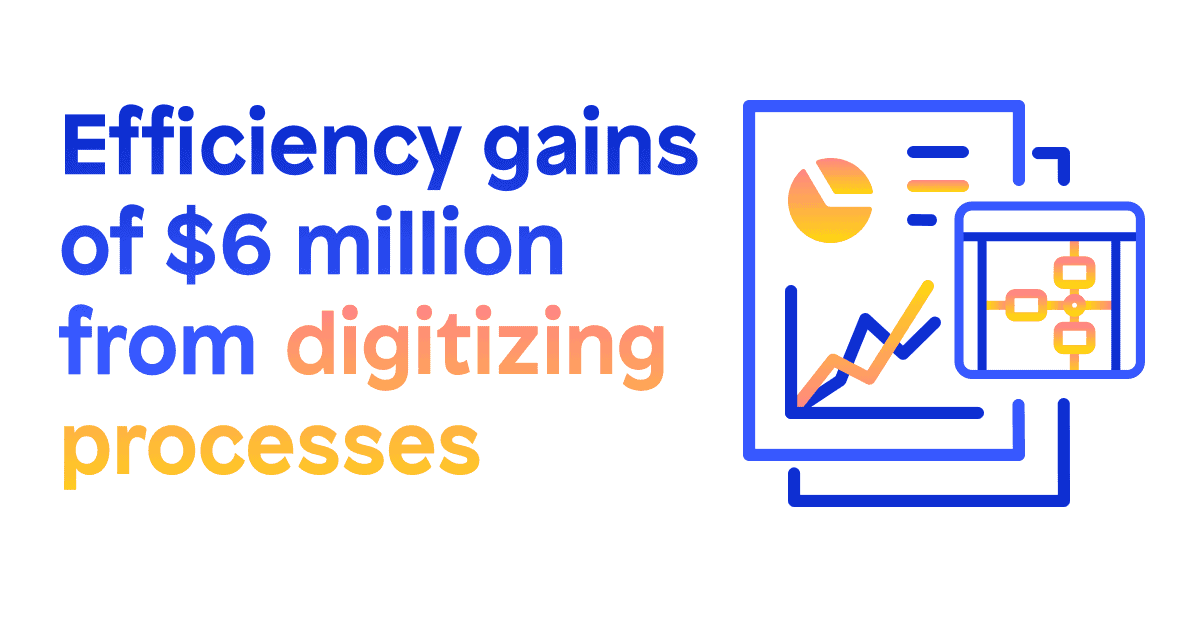
Conservatively estimating a per-hour pay rate of $28 and risk adjusting down 20 percent, the TEI report estimates a savings of $550K in the first year alone (3 FTE x 2080 hours X $28 x .8 risk adjustment) as a result of these applications.
Gross Profit from Improved Customer Engagement Attributed to Mendix
Better responding to customer need by building superior and differentiated user experiences helps win and retain customers, resulting in more revenue and gross profit for organizations. According to Forrester’s findings, the Mendix Platform will add $3.14 million in revenue from improved customer engagement over three years (risk adjusted).
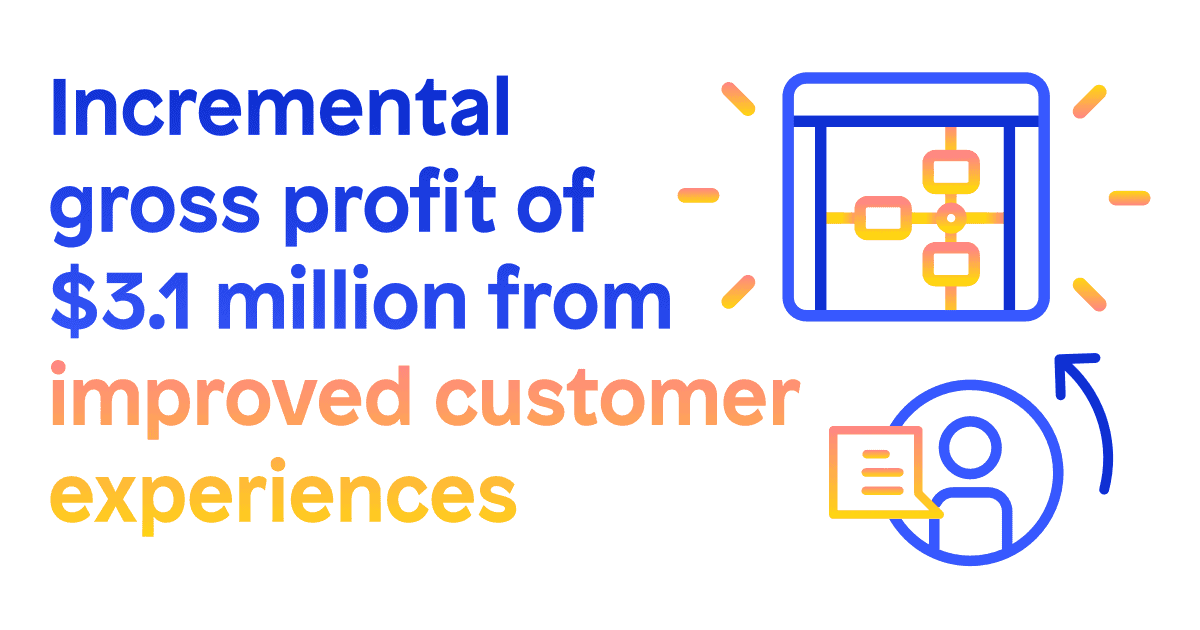
Customer service improvements fall into two major categories: business and customer user experience and development efficiency.
Breaking It Down
According to Forrester Consulting’s customer interviews, quicker deployment, quicker iteration, and quicker response to customer feedback are all attributed to the use of the platform. If 50 percent of the applications developed per year using Mendix’s low-code platform are customer-facing, and if each application averages $4M in revenue, the composite organization will see a $3.1 million benefit over three years, risk adjusted by 20% to $2.5M. This number factors in a 5 percent incremental annual revenue gain due to better customer service, the industry average gross profit margin associated with this incremental value.
Gross Profit from Accelerated Time-to-Market Attributed to Mendix
Market opportunities can be fleeting, gone in a heartbeat, and customers demand quick action and continuous improvement. According to the TEI report, the composite organization’s ability to accelerate time-to-market for new products and services while using the Mendix Platform results in a $3.33M (risk adjusted) in incremental revenue over three years.
The composite organization’s added profit comes from two areas: more opportunities for research and development and less total effort and time spent per fully stacked, skilled developer.
Breaking It Down
Based on an average of $80,000 per month of new product or service revenue and an average of seven-months accelerated deployment, the total revenue generated by rapid development achievable through Mendix jumps dramatically as more technology enabled products and services are released each year. Customer interviews suggest a jump from 1 to 6 to 12 each year is a reasonable goal for the composite organization. These numbers are halved by an industry average gross profit margin and then tempered by a 20 percent risk adjustment to determine results.
How can you realize the benefits of low-code with Mendix?
Forrester’s study of the Total Economic Impact of the Mendix lays out the quantified benefits of using Mendix’s low-code platform. Application delivery and operational savings coupled with gross revenue gains resulting from better customer experience and time-to-market can help an organization yield $20M in total benefits over three years. On top of those numbers, many qualitative benefits underpin Forrester’s findings, such as organizational autonomy, market response, and happier, more productive employees who stick around longer.
For more information, download Forrester’s Total Economic Impact of the Mendix Low-Code Platform report. You can find out more about the necessary resourcing, benefits, and factors so you can make an informed decision about how low-code will impact your organization.
